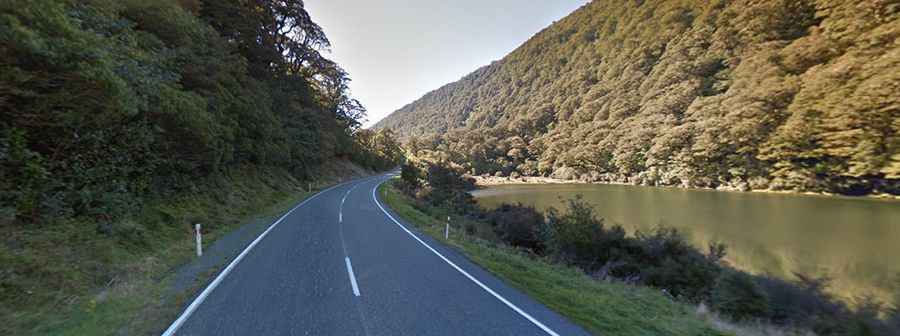Milford Road is a truly epic road in New Zealand
Milford Road is an awe-inspiring scenic drive in South West New Zealand that offers a dramatic and beautiful journey from Te Anau to Milford Sound.

Where is Milford Road?
Milford Road (part of State Highway 94) is a highly scenic drive through Fiordland National Park and portions of the Te Wāhipounamu World Heritage Area, one of the great wilderness areas of the southern hemisphere.
How long is Milford Road?
The road is entirely paved. It’s 118km (73 miles) long running south-north from Te Anau to Milford Sound.
When did Milford Road open?
This truly epic road commenced construction during the Great Depression in 1929 but was not completed until 1953 as work came to a halt during World War II.
How long does it take to drive Milford Road in NZ?
To drive the road without stopping will take most people between 1.5 and 2 hours. It is regarded as one of the most scenic roads in New Zealand. It is an unforgettable journey into the heart of Fiordland National Park and the Te Wahipounamu World Heritage area. Drivers are well advised to set aside extra time to see the sights, though – including the beautiful Mirror Lakes, perfectly reflecting the Earl Mountains and the Cleddau River with its dramatic waterfalls – before reaching the pristine serenity of Milford Sound. It’s hard not to stop and stare at the ridiculous beauty of Eglington Valley and the Mirror Lakes (which mirror their surroundings with crystal clarity). The Avenue of the Disappearing Mountain is also staggering -- an optical illusion causes the approaching mountain to get smaller rather than larger. Lord of the Rings was filmed in New Zealand partly because of its gorgeous, naturalistic views, which are captured in Milford Road in the middle of the Southern Alps. Think mighty cliffs, snow-capped summits, waterfalls, and fern trees that stick their middle fingers (or branches) up to gravity. Milford Road is the only road to one of New Zealand’s major tourist attractions – Milford Sound. While many travellers will be satisfied to admire the scenery through windows of a car or bus, others will be rewarded by stopping to discover the short walks or viewing sites along the way. Despite its remote location, many people travel along the Milford Road each year, particularly in the busy season (October to April). Drivers will be sharing the road with cars, coaches, camper vans and minibuses. There is less traffic in the winter months (May to September) but the road conditions require more caution.
Where is Homer Tunnel?
One of the most famous highlights of the road is the stunning Homer Tunnel. With a length of 1,270 meters (4,200 feet), it was carved out from solid granite and took nearly 20 years to complete.
Is the road to Milford open?
It is also one of the highest highways in New Zealand, with the highest point of the road reaching 940 meters (3,100 feet) above sea level. The entire length of SH 94 is susceptible to snowfall during the winter months, and care should be taken at any time of the year. This road is usually open all year long, but the weather conditions between June and November can be hazardous when vehicles will need to carry chains. There are many road status information signs that will alert you to the need to carry or hook up chains. It is illegal to drive without chains during the winter months, so don't forget to take them. Snow can fall on higher parts of the road any time of the year. Snow, ice and the risk of avalanches make safe driving critical. Avalanches are a winter hazard in the high mountains above the Milford Road, and snow and ice affect the road surface in winter months, transit signs inform motorists of conditions, and a Transit New Zealand checkpoint has been built to make sure road users carry chains for safe passage to Milford Sound. Metal gates are positioned across the Milford Road in the Hollyford and Cleddau Valleys when the road is closed at times of peak avalanche probability.
Is it safe to drive the Milford Road?
The Milford Road takes you through very remote, unsettled terrain, and before departing on your trip from Te Anau, you are advised to fill your cars with fuel, although limited supplies are available at Gunns Camp in the Hollyford Valley and at Milford Sound. It’s one of the more dangerous public roads in New Zealand, with injury crash rates around 65% higher than the rest of New Zealand's network, and a fatality crash rate of almost twice the average (per vehicle kilometre traveled), making it the third most dangerous section of New Zealand's State Highway network. Due to the nature of the Fiordland Environment, the road can be closed at any time of year from landslips, treefalls, and washouts. SH 94 is susceptible to snowfall during the winter months, and care should be taken at any time of the year, especially on the hillier regions between Mossburn and Milford Sound. Flooding can also occur at any time along the road, especially around rivers.